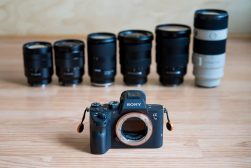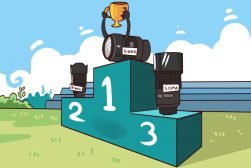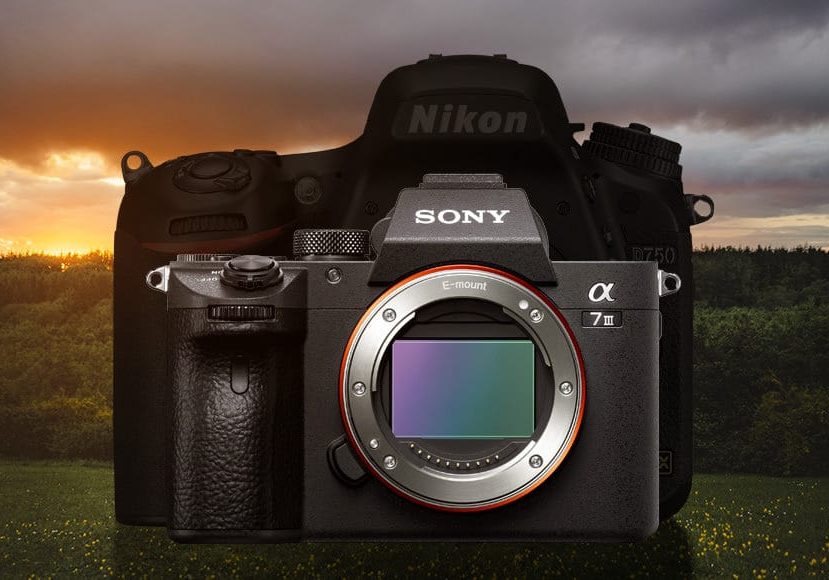
Nikon D750 to Sony a7III Switch
After a decade of photographing weddings with Nikon cameras, I traded my D750 for the Sony a7III. How do I feel about the change, almost one year on?
A year ago wedding photographer Deci Gallen of Simple Tapestry made the switch from the Nikon D750 to the Sony a7III, selling all his Nikon camera gear in the process. Here’s the story of how it happened.
We had been shooting with Nikon our whole professional career.
Our first Nikon was the D700, and over the years my wife Brideen and I have owned everything from the brilliant Nikon D3
and D4
to the awful Nikon D610
and D800
(seriously, those were two dogs).
We’d always assumed that someday we’d be updating our D750s to whatever Nikon came up with to replace it.
When a good friend brought the Sony a7III around to my house last year, I was expecting it to be rubbish.
I’d tried various Sony mirrorless cameras that I had instantly hated – they were just so uncomfortable to hold. We’ve also owned a couple of Fuji mirrorless cameras (X-100, X-T2
) over the years.

Incredible AF performance, amazing image quality, great battery life - best value full frame camera.
These led me to believe mirrorless is still some way off challenging DSLRs for ’real’ work – I’m a big-cheese professional photographer, don’t you know…
I’m not a fanboy but I like it when something works well. And having shot Nikon for 10 years, I would have looked at their range first when replacing a camera body.
So, in truth, I wasn’t objective about the Sony when I first grabbed it.
Still, all it took us was a day to realise the a7III was the camera we’d been waiting for. At the start of a busy wedding season, we ditched Nikon. Quicker than you can say Anakin Skywalker, we turned to the Dark Side.
Here are our long-term thoughts on our new cameras and how they compare to our previous Nikon systems.
Ergonomics of the Sony a7III
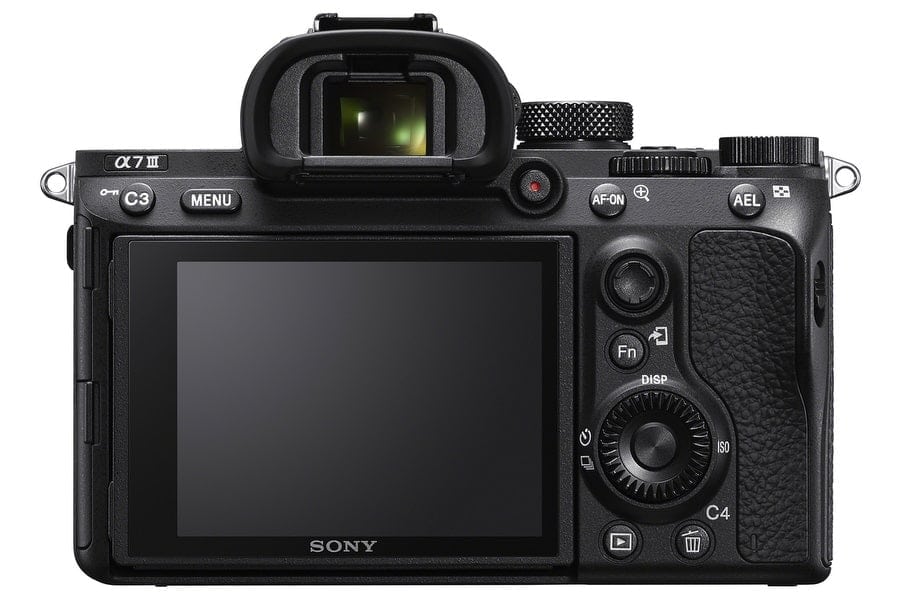
The Sony a7III has much better ergonomics than other mirrorless cameras.
There’s an important disclaimer, to start off: I’m 5’9” (175cm) and have dainty little Trump hands.
The Sony a7III felt great nestled in my tiny paws. Like the Nikon D750, the grip is well recessed, and I didn’t have the ‘pinky problem’ I’d had with older Sonys.
The weight of the cameras is also key factor. I can shoot back to back weddings now without feeling like my hands are going to drop off.
I’ve shot around 30 weddings and countless other shoots with the Sony a7III and have few ergonomic complaints. You’ll find that most things will be ingrained in muscle memory after a few shoots.

Sony a7III + Zeiss Batis 25mm f/2 | 1/4000 f/2.2 ISO 100
It’s great to have dedicated AF-ON and AEL buttons, unlike the D750. You’ll find your thumb easily navigates the back of the camera without looking.
I’ve spoken to a whole horde of wedding photographers that have made the jump to Sony in the past year.
Nikon shooters are definitely the most at home with the ergonomics, while it seems to be a steeper learning curve for Canon shooters. In this aspect of the Nikon d750 vs Sony a7III not much getting used to is needed!
The Sony Menu System
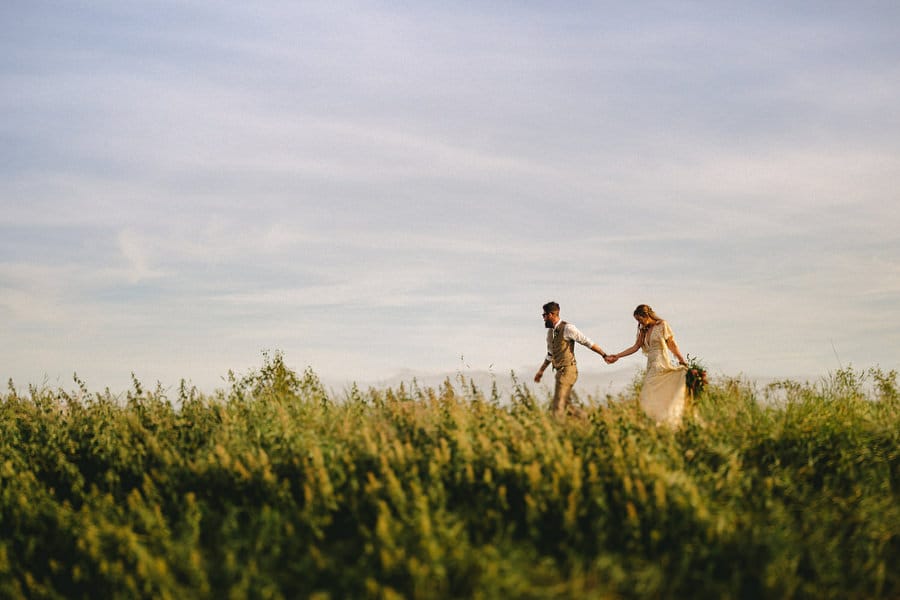
Sony a7III + Nikon 45mm f/2.8 PC-E + Metabones Adapter | 1/1250 f/2.8 ISO 100
The Sony menu system seems utterly bonkers at first. There are around 14 billion menu pages to navigate.
It feels like it was designed by the sort of person who can conceptualise quantum mechanics but struggles with Netflix.
With that said, I quickly grew to enjoy its complexity. Yes, it could be better, but Sony has left the a7III pretty open to customisation. The result is an extensive menu.
Just like on the Nikon D750, you can assign items to your own custom menu. I cannot emphasise how important this is. Without it, you’ll spend six weeks trying to format a memory card.
There is also the mini function menu, accessed by a dedicated button on the back. It’s fantastic for making changes on the fly without taking your eye off the action.
Customisation on the Sony a7III
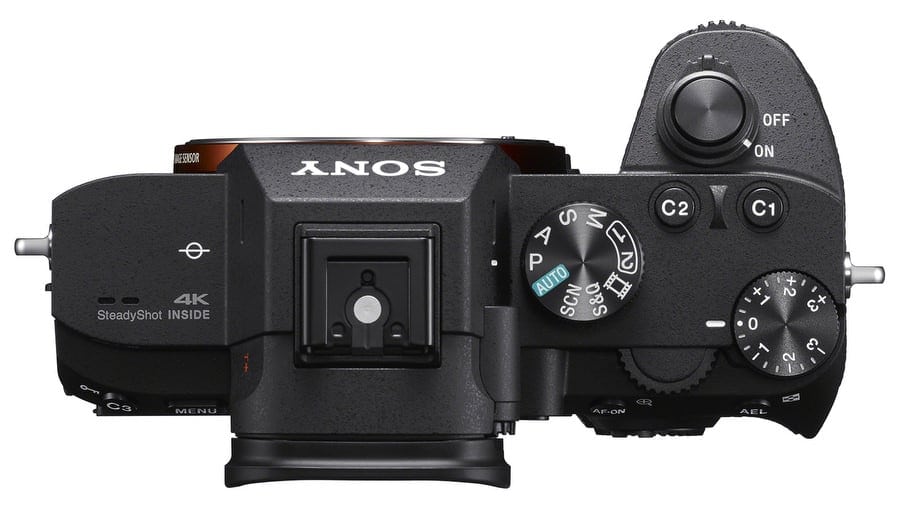
C1 and C2, just two of the many customisable buttons on the a7III.
Why aren’t all cameras this customisable? It’s utterly brilliant that Sony let you do this.
I remember marvelling that I could assign my movie Rec button to control ISO on the Nikon D750. Sony is the next level in that regard, and it’s an ingenious way of doing things.
I first set it up to mimic my D750, but over the past year I’ve tweaked it a lot. I now have a quick way of turning on the silent shutter, and I can swiftly access functions like face focus when I need them.
By default, I have the camera set to EVF and I manually switch to LCD when I want to use it – a habit from the D750. This also helps to conserve battery, as the EVF turns off when my eye isn’t at the viewfinder.
When put side by side, this Sony a7III vs Nikon d750 comparison shows just how Sony did customization right.
Autofocus
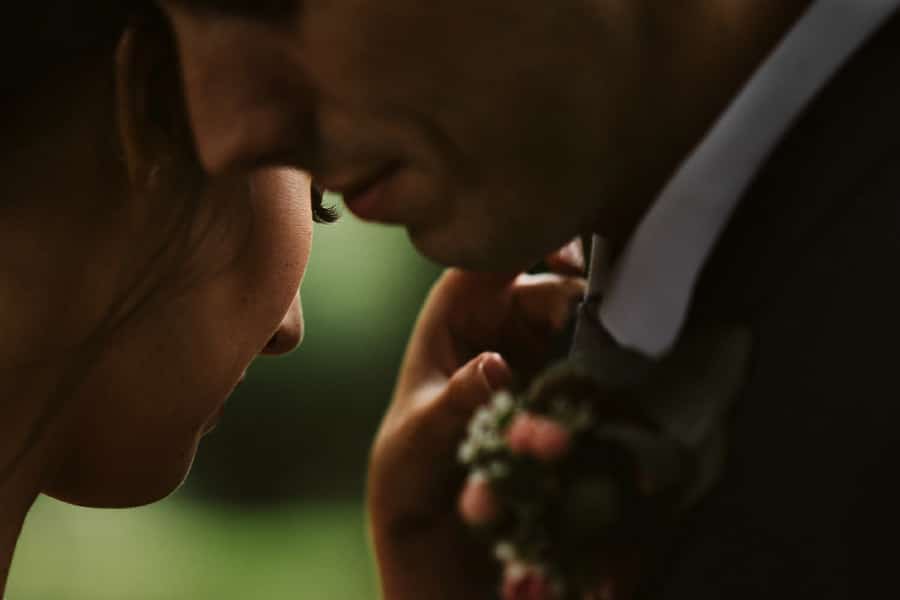
Nailing focus on an eyelash at f/1.8 with the a7III | Sony a7III + Zeiss Batis 85mm f/1.8 | 1/1000 f/1.8 ISO 100
I’ve used the Sony a7III in some challenging situations, and it’s been as good or better than the Nikon D750 or D850
. It gets focus practically every time, and the images are as sharp as any I’ve taken with a Nikon. This has been a point of contention to some photographers when talking about the D750 vs a7III.
Edge to edge tracking is incredible. We’ve tested this with people walking, running, and jumping towards us, and almost all shots are usable.
This has made it more fun to shoot confetti runs and kids running about, especially when combined with Eye AF.
Coming from the D750 with its tiny cluster of AF points, the a7III will spoil you. In fact, it beats any DSLR in this regard. 693 phase-detect and 425 contrast-detect AF points cover 93% of the frame.
In real-world shooting, this means you can track subjects right up to the edge of the frame.
I’ve gotten so confident in the a7III’s focusing ability that I find I’m shooting wide open way more often. Even at f/1.4 you’ll find it rarely misses focus. Crazy.
Does Eye-Autofocus work?

Eye AF allows you to stay locked onto your couple | Sony a7III + Zeiss Batis 25mm f/2 | 1/2000 f/2 ISO 100
I was sure that Eye AF was going to be a gimmick, something that manufacturers boast about to sell cameras that has limited real-world use.
Nearly a year on, I’m hooked. I don’t think I could buy a digital camera without it.
It’s perfect for wedding photographers, especially during portraiture, leaving you to concentrate on framing.
When a bride walks up the aisle, you can lock on to her eye and rarely miss a shot as she walks towards you. There is also a handy feature that allows you to store faces, so the camera prioritises them.
In my first review of the a7III, I said there was room for improvement, and Sony has done just that with its May 16th, 2019 firmware release.
While Animal Eye AF isn’t of much use to me, it’s a good sign that Sony is pushing the bounds of what is possible with their current tech.
Low-light autofocus
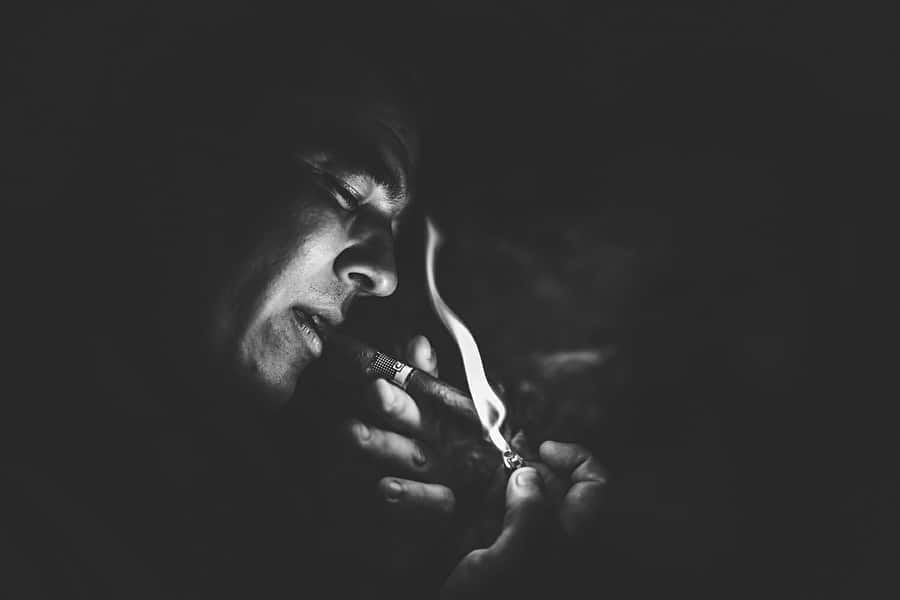
With only the glow from the lighter, the AF had no issues | Sony a7III + Sigma 35mm f/1.4 DG HSM Art | 1/100 f/1.4 ISO 640
In low light, I find it beats the D750 regarding both AF and high ISO ability.
I didn’t find the camera hunting for focus in conditions that had me shooting 6400 ISO, unlike the Fujis I had owned (and many DSLRs). In fact, Eye AF was often working accurately.
In post, I found more colour depth in high ISO than on the D750.
The only situation where I find the camera sometimes struggles is on a dark dance floor with disco lights flashing.
This is because it can’t throw out a big infrared splodge to help it focus, like my D750 did with a Speedlight
attached.
Electronic Viewfinder

Nailing exposure is easier with an EVF than an OVF | Sony a7III + Zeiss Batis 85mm f/1.8 | 1/500 f/1.8 ISO 100
EVFs polarise people more than Brexit, but I think it’s great (the EVF, I mean – Brexit is a nightmare).
There’s no more chimping to double-check exposures – I know I’ve nailed it (and likely the focus too). There is a millisecond of blackout when taking a shot, but it doesn’t bother me.
Shooting my manual Nikon lenses on the Sony is more enjoyable than on Nikon, thanks to peaking. I have no issues with lag or disorientation, which I’ve heard others mention.
Using my Nikon tilt-shift is much easier on Sony, thanks to the EVF and focus peaking.
If you live in a hot country, reviewing images on the EVF in harsh sunlight is handy.
LCD Screen
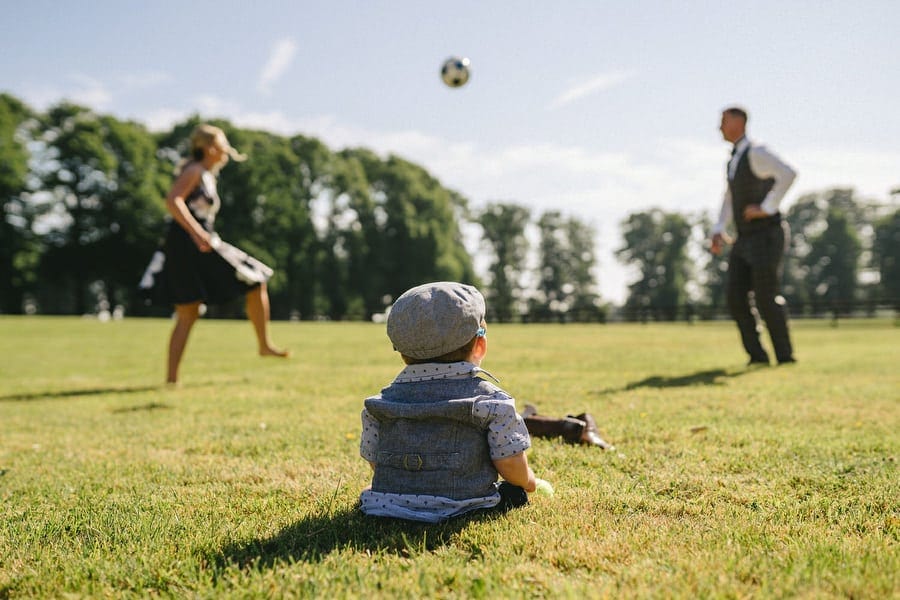
Shooting with LCD helps you get down to a kids-eye-view | Sony a7III + Sigma 35mm f/1.4 DG HSM Art | 1/4000 f/2.2 ISO 100
Don’t listen to any curmudgeonly old pros that tell you LCD shooting is for amateurs. Any feature that your camera gives you is worth exploring to see how it can improve your photography.
On the D750 the LCD was a mixed bag. I loved shooting with the flippy screen and exposure preview but hated the piss-poor AF and fortnight of screen blackout with every click.
Whether you shoot with the EVF or the LCD screen, the a7III uses the same incredible AF.
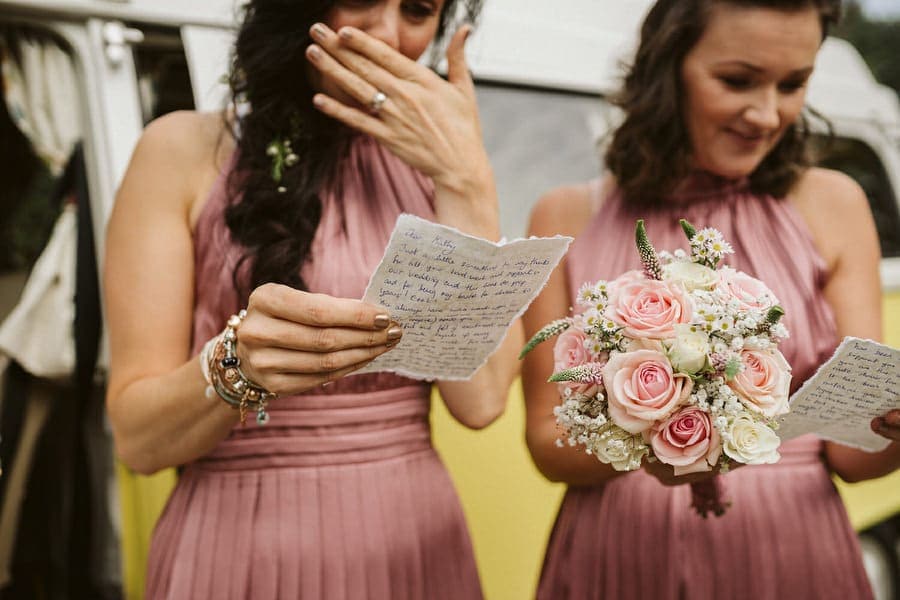
Shooting from the hip is subtler in emotional moments | Sony a7III + Sigma 35mm f/1.4 DG HSM Art | 1/1600 f/2 ISO 100
Using the LCD helps you make more interesting compositions. The beauty of using the LCD is that you can shoot from all kinds of angles and perspectives.
At weddings, this lets you subtly shoot from the hip to get candids, or tower above the crowds when needed. You can also use the touch screen to move your focus point around the screen quickly.
We’ve taken shots with the a7III using LCD in combination with Eye AF. That simply wouldn’t have been possible on the D750.
Some say you can easily tell the height of a bad photographer. Shooting with an LCD gives greater diversity to your shots.
Speed
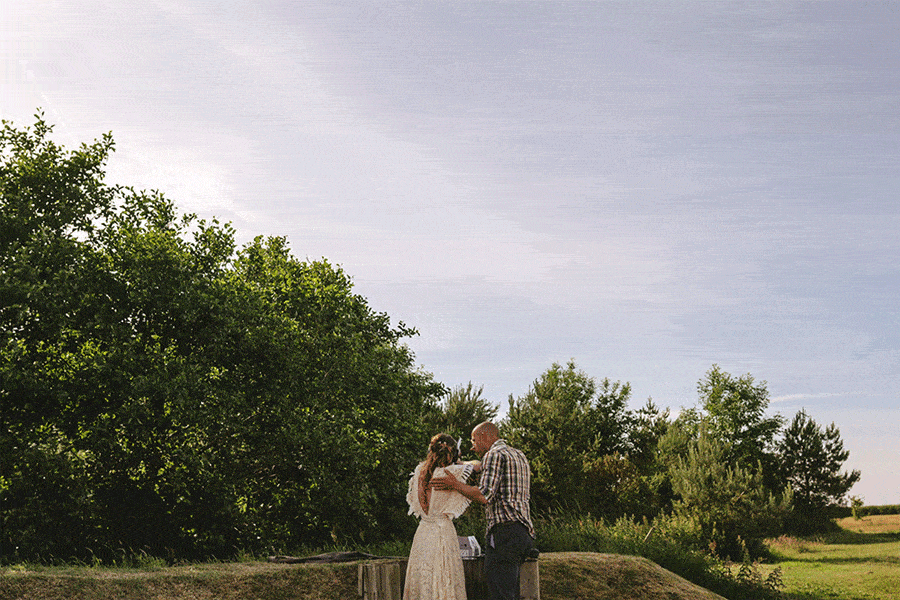
You can’t beat a gif! The a7III’s 10fps is astonishing | Sony a7III + Sigma 35mm f/1.4 DG HSM Art | 1/4000 f/2 ISO 100
The buffer, a big gripe of mine with the D750 from day one, is perfect on the a7III. It has never once stopped shooting before I wanted it to.
Too many times I’ve found myself covered in confetti and watching a couple kiss while cursing at my D750 that had decided to go on strike while it emptied its buffer.
The buffer on the a7III takes a lot of shots to fill.
The a7III can shoot compressed RAW at 10fps should you need it. And it can do it silently. That is utterly ridiculous.
You can adjust the drive mode for Lo, Med, Hi and Hi+ (a.k.a. insane). I generally find the Med or Hi setting is quick enough for most wedding burst-shooting.
Silent Shutter
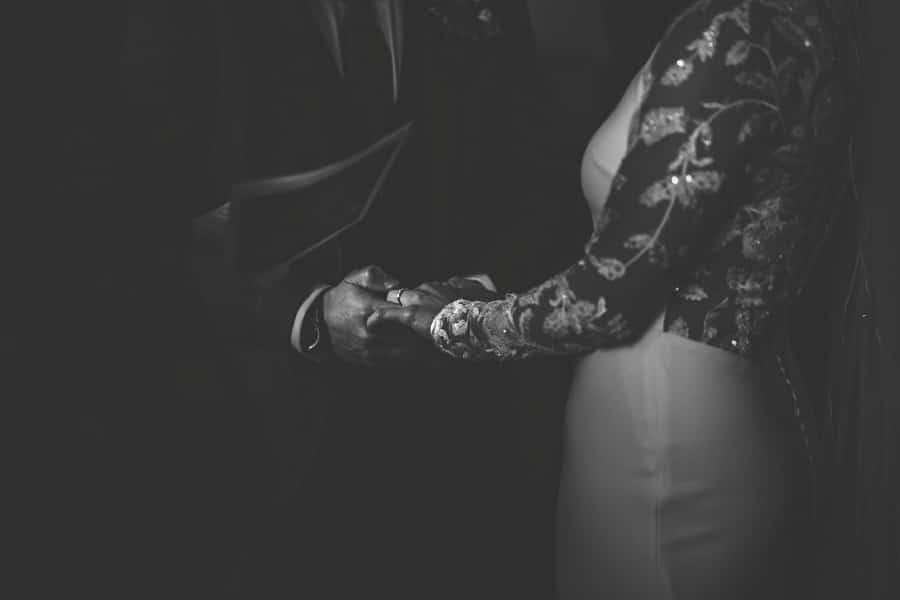
Silent shutter allows you to get close to the action during ceremonies without interrupting | Sony a7III + Zeiss Batis 85mm f/1.8 | 1/1250 f/1.8 ISO 100
Quiet mode in the Nikon D750 is crap. Instead of making things quieter, it elongates the shutter snap making it sound like your camera is having a stroke.
With mirrorless cameras, silent means silent. It allows me to do Unit Still Photography without a blimp, or become discreet when a wedding requires it.
The downside is banding in artificial light. Given that the majority of wedding venues use cheap LED lighting, it can cause problems.
The Sony a7III does alert you when it detects flicker, and you can adjust your shutter to compensate.
You will notice shutter roll if you shoot fast action in silent mode. For wedding ceremonies and speeches where a silent shutter is most needed, we haven’t had a problem.
If you find yourself wanting to shoot fast moving objects while silent, you’ll need the Sony a9 if you don’t want weird distortion.
Build Quality

Sony a7III + Sigma 35mm f/1.4 DG HSM Art | 1/4000 f/1.4 ISO 100
My old Nikon D4 was made of the same stuff as Captain America’s shield. Honesty, you could batter down a bank door with it.
The Sony a7III is nowhere near that level of build quality, but in a year of shooting, we’ve had no issues with any of our cameras.
There was no overheating when shooting in Spain and France in summer. And the cameras dealt with various cold soakings during our Irish winter.
Unlike our Nikon D750s, we haven’t had any annoying product recalls or shutter failures in the first year.

There were multiple manufacturer notices of problems with the Nikon D750 in the first year or so after it came out!
One thing that is annoying is that the sensors tend to gather a lot of dust. I have to clean our a7III sensors more often than I did our D750s.
It would’ve been a good idea for the shutter to automatically close when you remove a lens.
As I suspected, the black metal finish has picked up a few scuffs on the edges. Also, just like with the D750, we’ve lost a couple of viewfinder covers. They’ve either fallen off or broken off.
All in all, it appears the a7III is robust enough for wedding professionals.
Battery Life

The Sony a7III’s NP-FZ100 battery greatly extends shooting duration.
Battery life is relative. Compared to the D750, the a7III isn’t as good. Compared to other mirrorless cameras, it’s fantastic.
If you’re a wedding shooter, you will need a second battery to get you through a full day. I always carried extra batteries in my bag for the D750, so this hasn’t inconvenienced me at all.
One great addition to the a7III is USB or USB-C charging. If you get stuck without a power source, you can charge your camera by plugging into a battery pack.
When shooting destination weddings, we bring one plug capable of charging our 4 cameras and MacBook simultaneously. It’s a great weight saver for travel.
Post-Processing
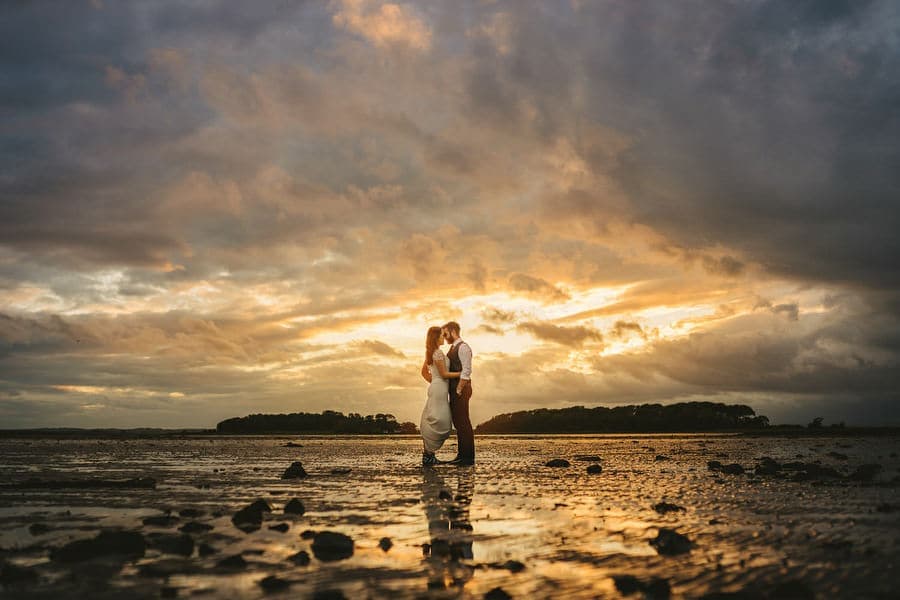
Incredible dynamic range lets you pull out all kinds of detail from your files | Sony a7III + Sigma 35mm f/1.4 DG HSM Art | 1/800 f/2.2 ISO 100
I have read many articles about colour science yadda, yadda, yadda, but it took me no time to adjust my Nikon presets for Sony a7III files. Over the year I’ve tweaked them further, accounting for different lighting situations.
Many photographers were attracted to the Nikon D750 because of its fantastic dynamic range. The a7III is easily as good. This is a testament to the sensors on both cameras.
I find the a7III is slightly better at pulling detail out of highlights. I expose for sky, and bring out the shadow detail.
I find my Sony files as easy to edit as any Nikon file I’ve ever worked with. Looking at our yearly roundup I would doubt anyone could tell the Nikon images apart from the Sony ones.
Lenses
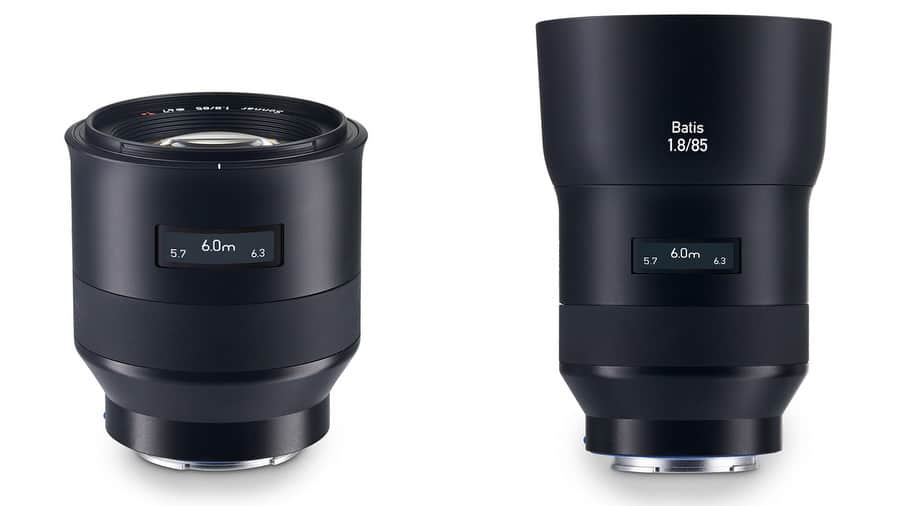
The Zeiss Batis 25mm f/2 and 85mm f/1.8
– two lenses with great character, compatible with Sony bodies.
I’m not a big pixel peeper. I don’t do ‘wall tests’ or compare bokeh side-by-side for ‘creaminess.’ I often love or hate lenses based on factors that aren’t easy to articulate.
When changing to Sony a7III lenses, I went for the same focal lengths I used with my Nikon. We shoot primes exclusively, and most of our work is shot on 35mm or 85mm.
I was lucky a friend was selling a Zeiss 85mm f/1.8, and it’s fantastic. Because of its shape and design, one of our brides referred to it as the ‘bell-end lens’. I’m still not sure if I love or hate that nickname.
Brideen shoots with a Sony 85mm FE f/1.8, and it’s every bit as good as the Zeiss. She also loves her Sony 55mm Sonnar T* FE ZA f/1.8
.
Because we had already spent a gazillion pounds changing everything, we settled on the Sigma 35mm f/1.4 DG HSM Art as our 35mm go-to. They are much cheaper than Sony’s 35mm SEL T* FE f/1.4
but sharp and quick.
Our Zeiss Batis 25mm f/2 (little bell-end?) is excellent but rather expensive when compared with Sigma’s 24mm f/1.4 DG HSM Art.
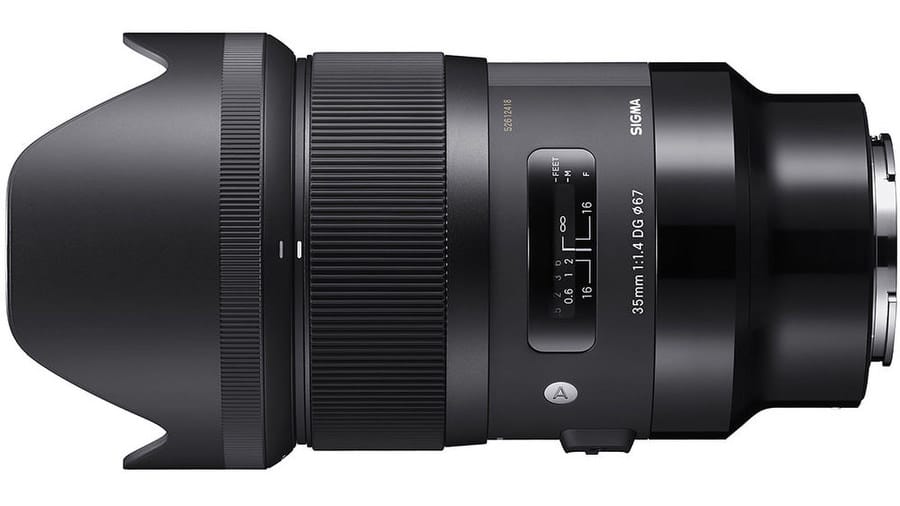
The Sigma 35mm f/1.4 DG HSM Art.
Sony doesn’t have the range of lenses that Nikon or Canon have. The good news is that Sigma has their full Art range of primes available in FE mount, offering a quality alternative at a more palatable price.
I can’t wait to get my hands on Sigma’s 28mm f/1.4 DG HSM Art.
When you switch to Sony from Nikon, you can kiss focus micro-adjustments goodbye.
Actually, you’ll not kiss them goodbye, you’ll kick them out onto the street in the rain and shout expletives at them while they scuttle off back to hell.
Micro-adjusting focus with Nikon DSLRs is a tedious process that takes hours. Thanks to the a7III
’s focusing system, any native prime lens we use is sharp and accurate straight out of the box.
You can also delve into the back catalogue of Nikon and Canon glass using adapters, with varying degrees of success.
Downsides of the Sony a7III

Sony a7III + Nikon 45mm f/2.8 PC-E + Metabones Adapter | 1/1250 f/2.8 ISO 100
I’ve yet to use a camera that I couldn’t whinge about, and the Sony a7III is no exception. Some complaints are trivial (the SD slots are the wrong way about), but some affect how the camera operates.
As this is really subjective, you may disagree, but many Sony shooters I’ve met have noted many of the same issues:
1. In my tiny child hands, the a7III feels perfect, but some will HATE the size of it. Sony could easily make the camera slightly larger without adding weight to it, and that would suit more photographers.
Lighter is more important than smaller for me when it comes to camera gear.
2. The REC button is really close to the AF-ON button. You can turn it off, so you don’t accidentally press it, but it would be better if you could customise it. It’s perfectly placed to use for Eye AF.
3. Even though there are a lot of buttons that you can customise, I’d love it if Sony added a couple to the front of the a7III like Nikon does.
4. There’s no way to turn Auto ISO on/off quickly like with Nikon. Instead, you have to cycle down to the lowest ISO value to access it.
Also, you cannot set your minimum shutter value to 1/3 stops, e.g. you can set it to 1/500, 1/250 or 1/125 but nothing in between.
Further, when you use Auto ISO the value isn’t displayed on screen. This means you’ve no idea how high the ISO is until you take a shot. Again, Nikon does it better.
5. The a7III is missing the handy drive mode/AF selector dial that features on the Sony a9. If you’ve come from a D750
, you’ll find yourself missing it. Dials are better than menus when you need to change things quickly.
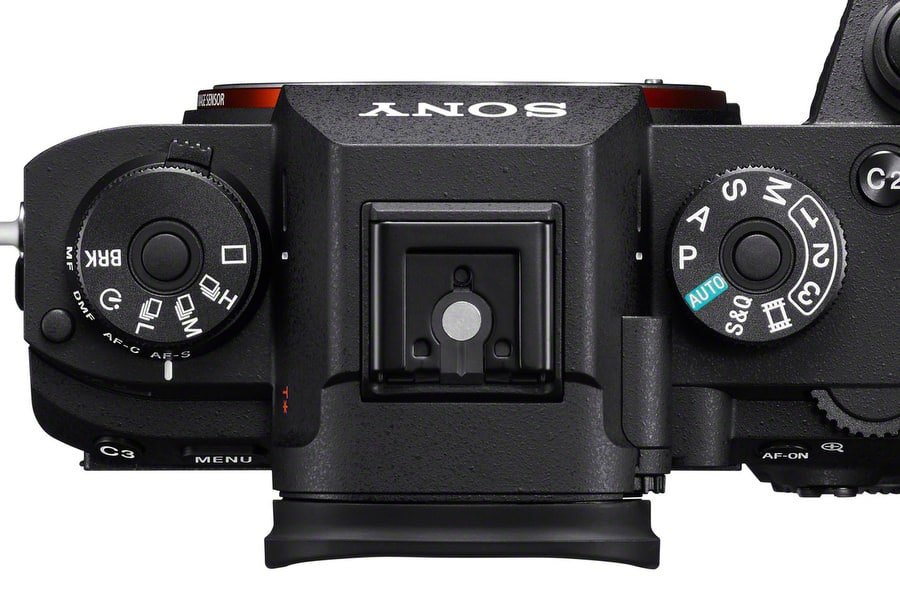
The a7III is missing the drive mode dial that the a9 (pictured) has, which is a shame.
6. The EVF and LCD are nowhere near as good as the Nikon and Canon mirrorless
cameras. Maybe it was cost saving or not wanting to cannibalise more expensive models, but Sony can make and has made better screens.
7. Something that irked me initially has become a festering rage over the past year.
Although the a7III records time to the second, you cannot set the time to the second. This makes syncing our four cameras a lot more awkward than it should be.
8. Having to get the subject to pose while you register them with face recognition is annoying.
Brides don’t have time for this on a wedding morning – especially for four cameras. You should be able to use the camera roll with face recognition.
9. Formatting a UHS-I card takes seven weeks on the a7III
. Not really, but it does take a lot more time than on a D750
.
10. Yeah, stop looking in that box, it’s not in there. Miserly Sony decided not to bundle a dedicated charger with the a7III.
I bought Hahnel’s amazing ProCube2 charger which is around the same price as the official Sony one but can charge two batteries simultaneously. It can also charge 4AA batteries.

Is it wrong to think a charger is sexy? The Hahnel ProCube2!
11. For some inexplicable reason, the Sony a7III has a touchscreen but it doesn’t work when navigating menus. Why, Sony, why?
12. There is no lossless compressed RAW format. This leaves you with the choice of shooting 50mb 14bit RAW files or 12bit lossy 25mb ones. Lossless compressed gives you top image quality while keeping file size down.
13. When reviewing images in Photo Mechanic, the extracted JPEG previews are small, making it difficult to check photos for focus. There are workarounds but none satisfactorily resolve the issue.
I think it’s really important to be critical of your cameras, even if they’re great. If you think things are daft or could be improved, let Sony know. Companies listen when enough people moan about their products.
Sony a7III vs Nikon Z6
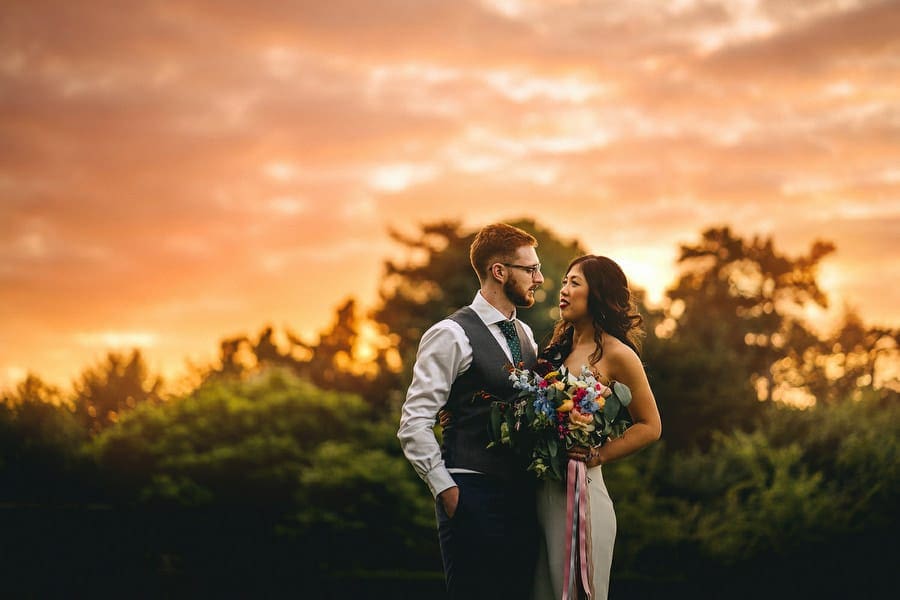
Sony a7III + Zeiss Batis 85mm f/1.8 | 1/250 f/1.8 ISO 100
I was impressed when I picked up the Nikon Z6. Ergonomically it’s wonderful, and the EVF and LCD are crisp and sharp.
I didn’t get to put it through its paces properly, but I found the AF to be reasonably snappy and the colours looked good.
It’s a good mirrorless camera for sure. But even with my ingrained affinity towards Nikon, I could never use one for wedding photography.
The main reason is one you’ve already heard a billion times: I want two card slots in my camera.
What’s that? You’ve never had a card failure? Good for you. I’ve never had a car accident, but I still wear a seat-belt.
I have had card failures in the past and thanks to dual card slots I’ve lost no photos.
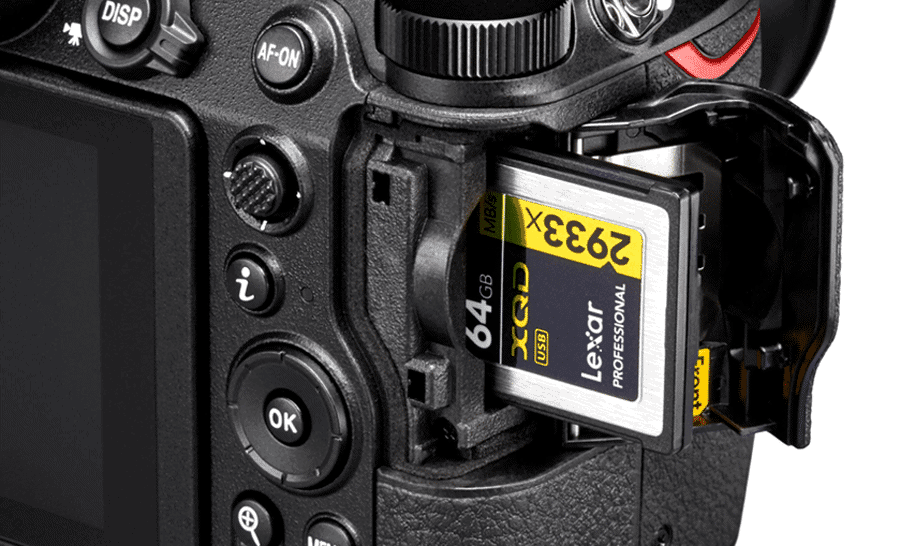
One card slot on the Nikon Z6!??! Are you crazy?
XQD cards are more robust than SDs
, but with one card there is always the potential of failure or dropping it into a mug of hot tea (yup, I’ve done that).
Shit happens – I think it was Abraham Lincoln who said that, or maybe not.
If you’re shooting landscapes or wildlife, this is less of a concern – an antelope or iguana is unlikely to sue you – but for weddings, it’s a non-starter.
Another factor is cost. Switching from the Nikon D750 to the Sony a7III, we were able to use our SD cards
in the new cameras. To replace all of our cards with equivalent XQD cards
would cost thousands.
Additionally, worse battery life on the Z6 could mean carrying three batteries per camera as insurance on a wedding day. That’s 4 more batteries, clocking in at a total of £280.
We calculated that switching to a Nikon mirrorless system while keeping our old lenses would’ve cost us more than the whole Sony system we bought including bodies, lenses and speedlights.
I have high hopes for Nikon mirrorless cameras in the future, and competition in the market is the best thing for all photographers, regardless of what you shoot with.
So, Should you switch to Sony?
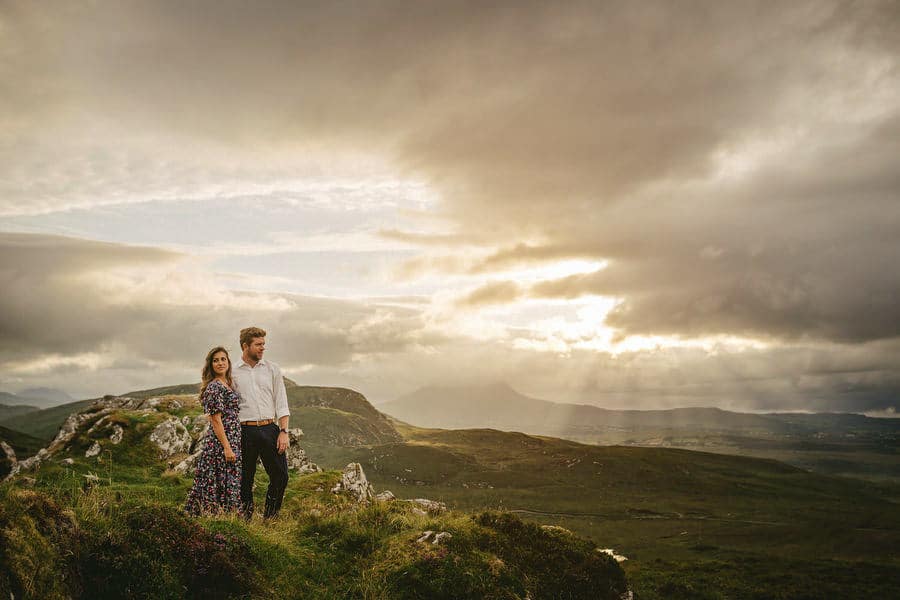
Sony a7III + Sigma 35mm f/1.4 DG HSM Art | 1/4000 f/1.4 ISO 100
The Sony a7III is objectively better than the Nikon D750 in almost every way, but that is no surprise. It’s newer and more expensive. The question of ‘should I change to Sony’ is a more subjective one.
Right now you can pick up a mint condition D750 for under £900 and use it with a range of lenses and accessories going back decades.
At that point, it becomes a question of economics – will spending almost twice the money on a Sony a7III make your images twice as good? Probably not.
Personally, I could never go back to the D750. Using one recently I was surprised to find that even though it’s a small full-frame DSLR, it felt like a brick. My back and shoulders are thanking me for switching to Sony.
If you shoot destination weddings, as we do, the lighter, smaller bodies make things easier. Everything we need for the two of us to shoot a wedding can now fit in a single carry-on bag.
If you like the Sony a7III and can afford it, switch. If money is no object, get yourself the Sony a9, as it’s even better.
[Related: Sony a9 review]
Final Words
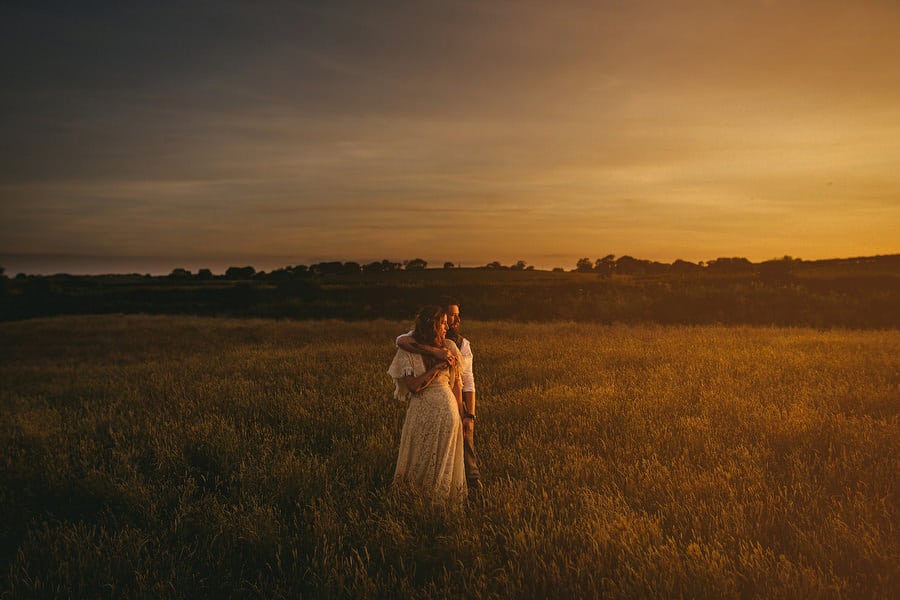
Sony a7III + Sigma 35mm f/1.4 DG HSM Art | 1/1250 f/1.4 ISO 100
This is an opinion piece, so here’s my opinion: I believe the Sony a7III is, pound for pound, the best full-frame camera for wedding photography that you can buy new at the time of writing.
It manages to provide speed and accuracy, along with excellent customisation in a small, sleek package.
Its sensor is brilliant, giving the perfect balance of IQ, DR, resolution and file size for high-volume shooters. I still believe 24mp is currently the optimum sensor size for weddings.
I’ve shot with the Canon 5D Mark IV and Nikon D750
/D850
. I find the Sony a7III to be as good or better than all of them while costing significantly less.
I think the Sony a9 is the best mirrorless camera you can buy, but its price will put off many photographers, especially if you have to buy two bodies.
The a7III is a pivotal moment in the evolution of mirrorless professional cameras. While DSLRs are still capable, they’re definitely entering their twilight years.
If Sony keep progressing like this, their next generation or two of cameras could finally kill off the DSLR.

Incredible AF performance, amazing image quality, great battery life - best value full frame camera.
Disclaimer: All recommendations are impartial and based on user experience, with no bias to the products or the brand. The products in this post may contain affiliate links.








